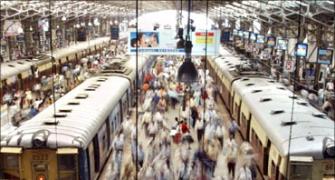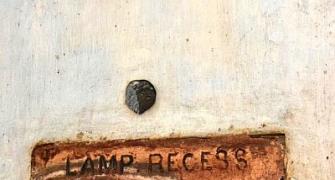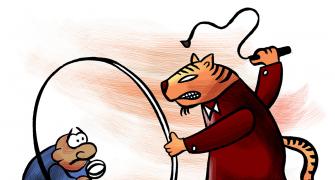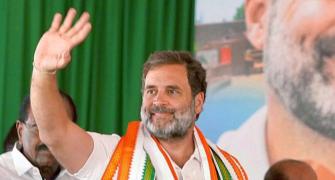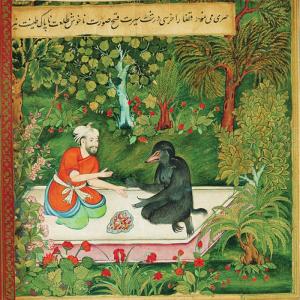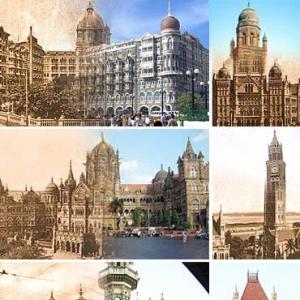Unaware of the historical marker outside Bandra railway station, hawkers used it to display their wares, reports Anil Singh.
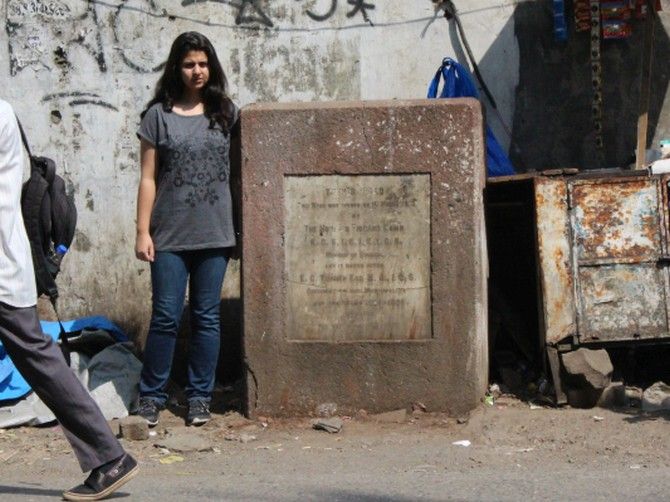
Just like a British-era milestone was discovered earlier this year when a hutment was demolished in Parel in central Mumbai, a century-old plaque marking Turner Road outside Bandra railway station has emerged after hawkers around the neighbourhood’s railway stations were evicted in the aftermath of the Elphinstone Road stampede.
Turner Road, now Guru Nanak Road, leads towards the seafront at Carter Road, now renamed after Bollywood composer Naushad Ali, who lived there.
It is easy to miss the marble plaque on the edge of the pavement where Turner Road meets the railway station. It is below eye-level, set as it is in a three-foot concrete block and covered in layers of grime and paan spittle. The spot is across the road from the popular Yaadgar falooda stall, now evicted. Unaware of the historical marker, hawkers used it to display their wares.
The plaque mentions that the road was opened on March 1, 1913. Just to place it in time, two years after Turner Road was opened an Indian lawyer named Mohandas Karamchand Gandhi returned to the land of his birth from South Africa.
Bandra railway station, though, had come up in 1869. Mumbai’s loveliest railway station edifice, fittingly preserved as a Grade I heritage structure, it caters to five lakh commuters a day, making it the third busiest station on the suburban section of Western Railway, after Dadar and Andheri.
The man who presided over the road opening ceremony, ‘The Hon: Sir Richard Lamb’, is mentioned in big, bold letters in the plaque. He was ‘member of council’. Bandra had its own municipality from 1876 right up to 1950.
And the man the road was named after, E C Turner, was the president of the municipality for two terms, only the first of which, ‘1903-1906’, is visible on the plaque. Those days, main roads were named after local British administrators. Carter of Carter Road was collector in 1924. Some other similar Bandra roads are Perry Road, Kane Road and Bullock Road.
Bandra then was largely a collection of farming and fishing villages, some which are still around: Ranwar, Waroda, Pali, Shirley, Malla, Rajan, Kantwady and Chuim. The British elite lived in colonial cottages with attached horse stables at MountMary and Pali Hill.
Local historians such as the late Fr Larry Pereira have said that the Englishmen went on fox hunts in the area that now is the Golibar slum in Santa Cruz east, played golf near Khar Danda village and spent the evenings in Pali Hill Gymkhana, where the Nibbana housing society stands today. There’s no sign of the golf course today and whatever remains of the open space is used by the kolis of Khar Danda village for drying fish.
After Independence, film stars such as Dilip Kumar, Rajendra Kumar and Sunil Dutt descended on Pali Hill. In fact, it has a road named after Dutt’s wife, Nargis, and a chowk named after Rajendra Kumar.
Will a Mumbai road be named after one of its recent civic chiefs? Unlikely, given the notoriety of its municipal corporation. But roads have been named after its municipal corporators, one of which is in Bandra itself: Ramdas Nayak Marg, formerly Hill Road, the one that leads to the basilica of MountMary. Today’s generation knows it as the road that leads to the houses of matinee idols Salman Khan and Shah Rukh Khan.
Ironically, Nayak, a BJP corporator, had once led an agitation against the renaming of Hill Road. The municipal corporation named the road after him when he and his police bodyguard were gunned down on this very road in 1994 by the Dawood gang.
Over the years, Hill Road was dethroned by Turner Road as the most desirable address; today it’s known for its old mansions, swanky buildings, jewellers, popular eateries as also a large bookstore.
Given the congestion at Turner Road it is difficult to believe that for many years after it was opened Bandra had just one bus service to and from the railway station. Ajit Rodrigues, whose family has roots in Bandra for three centuries, has heard of protests when Turner Road was being made as the farmers who lost land felt that instead of the 30 feet that was being taken, a 15-feet –wide road would suffice.
Today it is no car park at Bandra station but in those days there were nine garages and the family of corporate communications expert Roger Pereira paid a monthly rent of Rs 10 for one of them. Even the well-off left their cars here and took the train to town. The garages were at the spot occupied by the booking counter whereas the bicycle stand was where the railway police station stood.
The British-era milestones in Mumbai are classified as Grade I heritage structures but the Turner Road plaque is awaiting such recognition from the Heritage Committee.
Bandra architect and former member of the Heritage Committee, David Cardoz, says he has written to the review panel of the committee to include the Turner Road plaque and Bandra’s historical markers in the heritage list.
“Several such gems have vanished and I am afraid the Turner Road plaque also might be lost in road-widening,” he added.
Surely, the Queen of the suburbs’, as Bandra is known, deserves better.
Image: The plaque outside Bandra railway station in Mumbai. Photograph: Shriya Kanodia.

